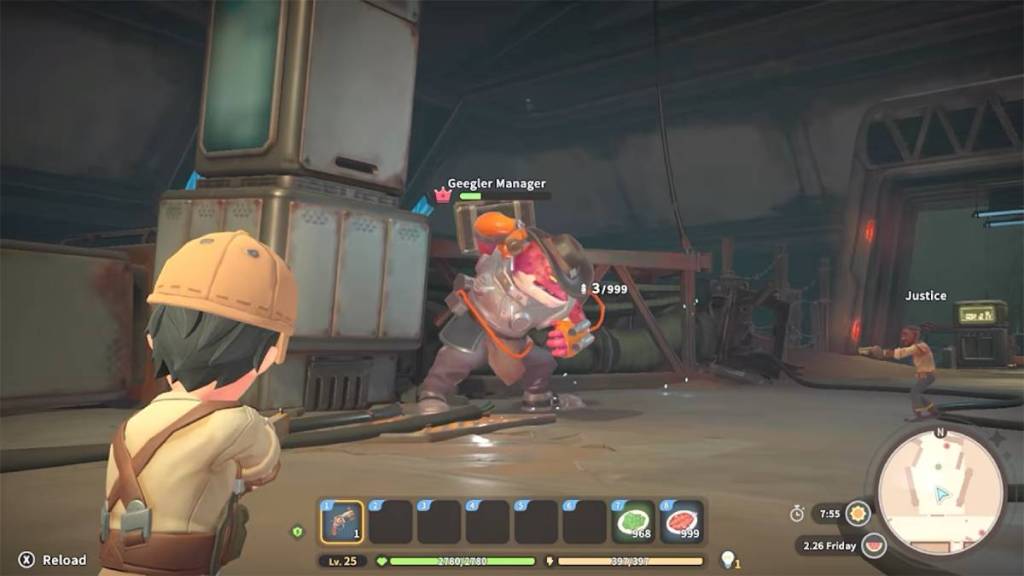My Time at Sandrock is a situation where if you played My Time at Portia on the Switch, you have some idea of what you’re getting into. The general concept behind the game and its world is inviting and intriguing, but the technical issues get in the way.
Sandrock is something of a dying town. Few people live there. Water is scarce. Not to mention both My Time at Pathea and My Time at Portia are life sim games set after an apocalypse, with people rebuilding. The player character is a new builder who is working for the Commerce Guild to help build up the town and assist the community. That means starting from scratch, making a name for yourself, and becoming a pillar capable of creating almost anything.
While there is farming and ranching in My Time at Sandrock, being a builder is the main focus. You’ll need to gather materials, either by going into ruins, fighting monsters, or exploring the world around you, then turn them into various contraptions. This also involves maintaining water levels, so your machines will run, and in some cases providing fuel to make things like a Recycler work. You’ll get assignments from mainline missions and side quests, as well as by picking up commissions at the Commerce Guild. Success means rewards like money, experience, gradually becoming better and strong enough to take on new challenges or build better machines for bigger builds, and developing relationships with members of the community.

Said townsfolk are My Time at Sandrock’s biggest draw. The world is big and, in many ways, barren. It’s to be expected from a post-apocalyptic desert, of course. But the people who do live in and around town are all colorful, well-realized, diverse, and interesting! Their voice acting is great, their designs are often fun, and I really enjoyed getting to know them and seeing their questlines. It’s also great for people who enjoy romancing characters in games, since it doesn’t limit you to people are are all in their early 20s and look fairly similar. Getting to know them is a delight, and knowing you get perks for even becoming friends makes connecting with everyone more satisfying.
Action-RPG elements also mean My Time at Sandrock can feel a bit like an entry in the Rune Factory series at time. You can fight various enemies out in the desert, getting materials for doing so. It feels natural here, given the environment and things that happened in the world. Plus, it felt good to know my primary sources of getting materials weren’t scouring for resources, diving into ruins, farming, ranching, or purchasing. I enjoyed trying to challenge myself, as well as experimenting with the weapons to find which ones suited me best. (Daggers are my favorite.)
So. The issue that bothered me most about My Time at Sandrock on the Switch is one of the least menacing. It’s a lack of information. You’re supposed to be able to press the analog stick to toggle if descriptions do or don’t appear in, say, shops. The problem is, you sometimes need to buy specific recipes for builds or may want to know what you’re looking at if an image is unclear and… you can’t.
That isn’t the only time when you’re not seeing what you supposed to. I had an issue where there should be junk piles showing up at Eufaula Salvage, but they just… didn’t appear. It happened with other items as well. It made the times when there were display issues with things like texture seem more manageable, because at least I could see those items were there.
I also ended up being a bit thankful that, even though My Time at Sandrock features a large town and area to explore on the Switch, sometimes areas felt shockingly empty. This is because the framerate is quite unreliable, especially if a lot of NPCs or enemies were around or I started running. It feels like the game can’t keep up with what it is rendering, causing pop-ins, lag, and other issues.
But the problem that is most concerning is how often My Time at Sandrock crashes on the Switch. I could practically time when it would happen. If I played for longer than two hours at a time, I was getting into the danger zone. It’s very easy to make a quicksave, which helps. But it felt weird to have to set a timer on my watch so it would vibrate and let me know, “Okay, your two hours are up, better switch to another game or do something else for a while.”

It really is heartbreaking to see that My Time at Sandrock on the Switch is My Time at Portia all over again. There’s potential here. The setting and worldbuilding is fantastic, and it’s a large game with plenty to do. But this version just doesn’t feel ready yet. Perhaps in a few months or a year, it will be in a good place. For now, it’s better to wait before making the move.
My Time at Sandrock is available on the PS5, Switch, Xbox One, Xbox Series X, and PC. The PS4 version is in development.